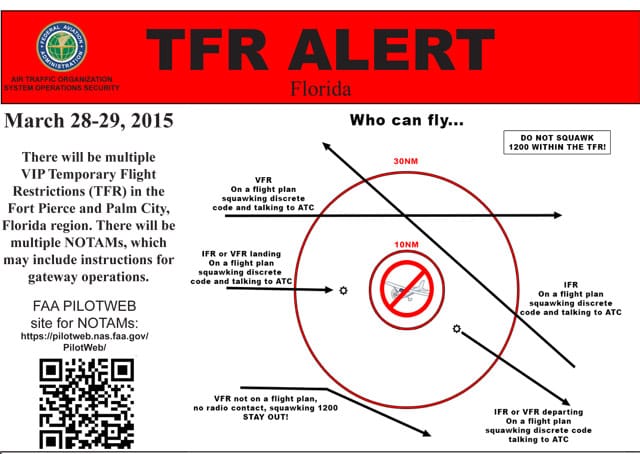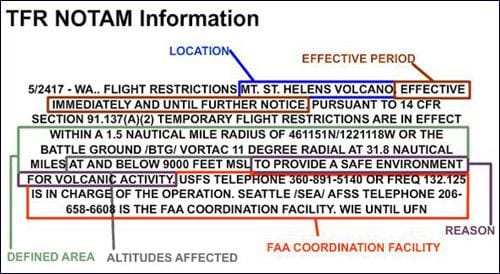What is a Temporary Flight Restriction (TFR)?

Temporary Flight Restrictions (TFRs) are a critical aspect of aviation safety and security, serving as a tool to manage airspace over specific areas for limited periods. TFRs are implemented to ensure the protection of persons and property on the ground or in the air, often in response to particular situations or events. This article delves into what TFRs are, the circumstances under which they are issued, and who and what they protect.
What are Temporary Flight Restrictions?

A Temporary Flight Restriction is a regulatory action issued by the Federal Aviation Administration (FAA), or equivalent authorities in other countries, to restrict aircraft operations within a defined airspace. These restrictions are temporary and vary in size, duration, and severity based on the nature of the situation prompting their issuance.
TFRs are communicated through Notices to Air Missions (NOTAMs), which provide detailed information about the restricted area, including geographic boundaries, altitudes, and the specific times during which the restriction is in effect. Pilots are required to check NOTAMs before every flight to ensure they are aware of any TFRs that might affect their route.
Reasons for Issuing TFRs

TFRs can be issued for a variety of reasons, including but not limited to:
- National Security: During significant national security events, such as presidential movements, TFRs are implemented to create a protective bubble around the area to prevent potential threats from airborne attacks.
- Disaster Response: In the aftermath of natural disasters like hurricanes, wildfires, or earthquakes, TFRs are established to facilitate emergency response efforts. These restrictions help manage airspace congestion and ensure the safety of search and rescue, firefighting, and medical evacuation operations.
- Major Public Events: Large gatherings such as sporting events, concerts, or political rallies often see the implementation of TFRs to prevent accidents or potential security breaches.
- Space Operations: During space launches and reentries, TFRs are issued to protect aircraft from hazards associated with rocket launches and debris reentry.
- VIP Movements: When high-profile individuals such as heads of state or other dignitaries travel, TFRs ensure their safety by controlling the airspace around their location.
Who and What Do TFRs Protect?
- People on the Ground: TFRs protect the public by preventing unauthorized aircraft from entering potentially hazardous areas. In the case of the president, it creates a buffer zone around wherever the president goes.
- Aviation Operations: By managing air traffic in sensitive areas, TFRs ensure that authorized flights, such as emergency response and military operations, can be conducted without interference. This organized control reduces the risk of mid-air collisions and other aviation incidents.
- National Security Interests: TFRs are a crucial tool for protecting national security interests by controlling the movement of aircraft in and around sensitive areas, preventing potential security threats.
- Event Participants: At major public events, TFRs protect attendees by keeping airspace clear of unauthorized aircraft, reducing the risk of accidental or deliberate incidents.
Compliance and Enforcement
Compliance with TFRs is mandatory for all pilots. Violating a TFR can result in severe consequences, including fines, suspension of pilot licenses, and even criminal charges, particularly if the violation poses a significant threat to safety or security. Enforcement is carried out by the FAA, with support from agencies like NORAD (North American Aerospace Defense Command) and local law enforcement, which monitor and respond to airspace violations.
Final Thoughts
Temporary Flight Restrictions are a vital component of aviation management, designed to protect both the public and critical operations during specific, often sensitive, situations. By understanding and adhering to TFRs, pilots play a key role in maintaining the safety and security of the national airspace system. Whether for national security, disaster response, or major public events, TFRs help ensure that the skies remain safe for everyone.





